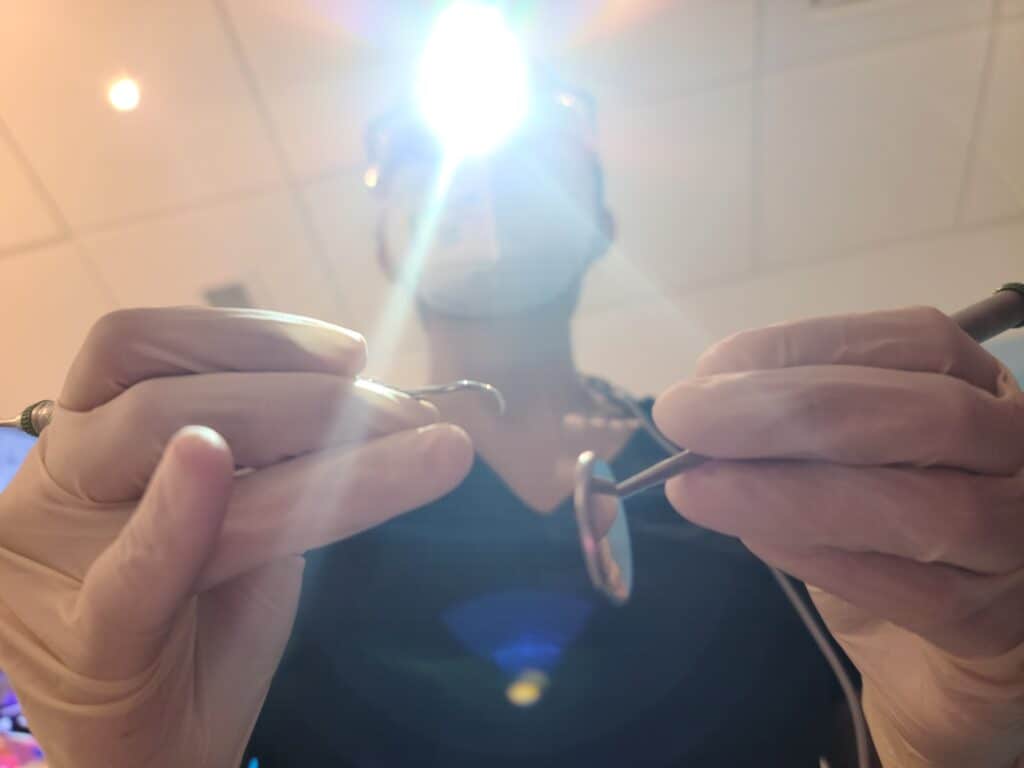
“The lady that scrapes my teeth” “The teeth cleaner” “The Hygienist” Might you have heard or even used any of these descriptives in reference to a dental hygienist? I can assure you there is more than meets the eye (or should I say tooth?) when it comes to your local dental hygienist.
What is a dental hygienist?
A dental hygienist is a trained and licensed healthcare professional that specializes in the prevention, detection and treatment of oral health diseases with the use of a variety of tools and techniques including scaling and polishing.
After a decade of practicing as a dental hygienist I’ve gotten a pretty good idea of what makes up this unique profession and what it takes to make the most of it.
Defining Dental Hygiene as a Profession
Sometimes we know what a word means conceptually but reading a dictionary definition may open a different perspective on the word. How would you describe what hygiene is?
Merriam-Webster’s dictionary defines hygiene as:
Conditions or practices (as of cleanliness) conducive to health; a science of the establishment and maintenance of health.
Slap on ‘dental’ as an adjective and you get dental hygiene. The science of the establishment and maintenance of dental health. So if a person comes to a dental hygienist and doesn’t have good oral health we help to establish and thereafter maintain their oral health.
Got plaque-induced gingivitis? We can help with that. Coffee and food stain? Gone. Tooth enamel hardening? We got you.
Dental hygienists play such a vital role in a society. If I could formulate the profession’s mission into a simple statement it would be something like this:
Dental Hygienists: Ensuring your full set of healthy teeth until your passing with the help of prevention and patient education.
A little macabre, I know, but it gets to the true gist of what we are trying to accomplish without being too wordy. We want people to never have to lose teeth!
In most lands, entering your golden years with a full set of healthy teeth is a miracle. But that is the goal we are shooting for.
Brief History of the Dental Hygiene Profession

Dentistry was not always prevention-focused. Historically one visited the dentist only when in pain because of a toothache.
However, in the late 1800s there was a growing awareness of the need to promote ‘mouth sanitation’. At first, all of the responsibility to keep the mouth clean was placed on the patient, with dentists limiting their involvement to simply educating the patient. But in the early 1900s, a certain Dr. D.D. Smith began to experiment with having patients come in for routine dental hygiene visits. These visits proved to be a determining factor in the reduction of tooth decay and thus preventative dentistry was born.
Once the importance of regular dental hygiene visits were established the participating dentists realized that the hygiene maintenance procedures were taking up valuable time away from other dental duties. The thought of involving women into the dental field as trained hygiene specialists began to take root.
The dental hygiene profession itself was thought up by Dr. Alfred C. Fones, widely considered the ‘Father of Dental Hygiene’. Through much of his advocacy the first graduating class of dental hygienists entered the workforce in 1914, with a Mrs. Irene Newman being the first dental hygienist and ‘Mother of Dental Hygiene’.
What a Dental Hygienist Does In-depth
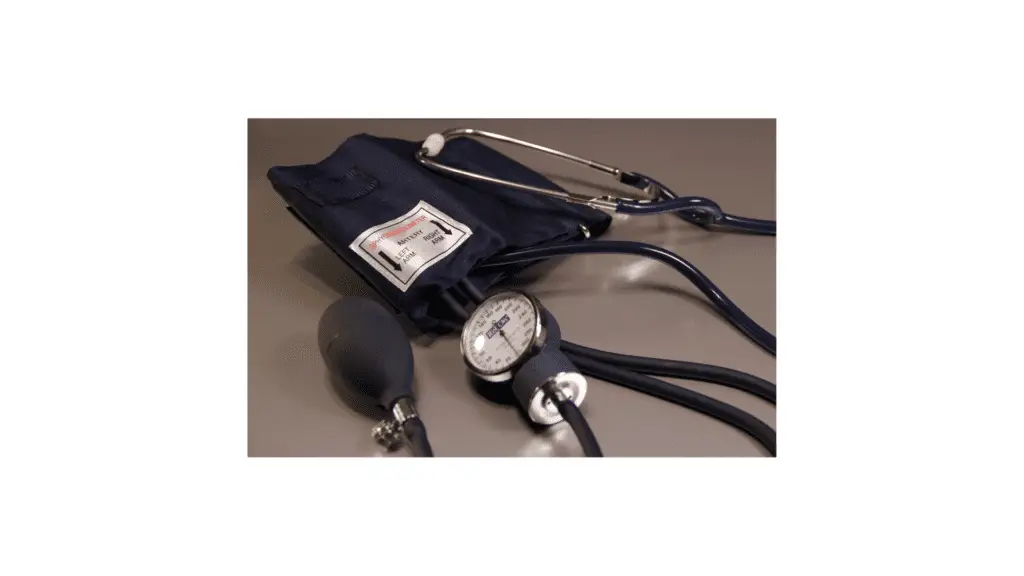
Medical History
A dental hygiene appointment starts off with the whole body. Why?
Because if you haven’t noticed, mouths tend to be attached to a person. Teeth, gums and other oral structures are connected and affected by the whole body.
Those of us that remember our dental hygiene training remember the importance of taking vital signs: Blood pressure, pulse, and respiration. There have been some dental offices that will take blood glucose levels because of the prevalence of diabetes, especially in the US.
I’ve had several patients show surprise at my proactive stance on vitals. I simply state that it’s something routine I do for my patients since high blood pressure is such a prevalent condition.
I’m actually very proud of taking such vitals because I am directly contributing to my community’s health. Dental hygienists are another set of eyes on them in addition to their physician (if they even have one!)
Part of a dental hygienist’s training involves pharmacology. We need to know how medication works and even how recreational drug use looks like in order to best serve our patients and provide them the care they need. There are some drugs and supplements that a patient may be using that will affect the mouth and other oral structures.
For example, if I see a lot of bleeding when cleaning around the gums I may be inclined to think the patient has a severe case of gingivitis but if upon closer questions I find that they are on blood thinners or on a heavy garlic supplement regiments (which thins the blood) then that may change how I see their bleeding gums and the etiology behind them.
Dental hygienists are healthcare practitioners! Not just for the mouth but for the whole body.
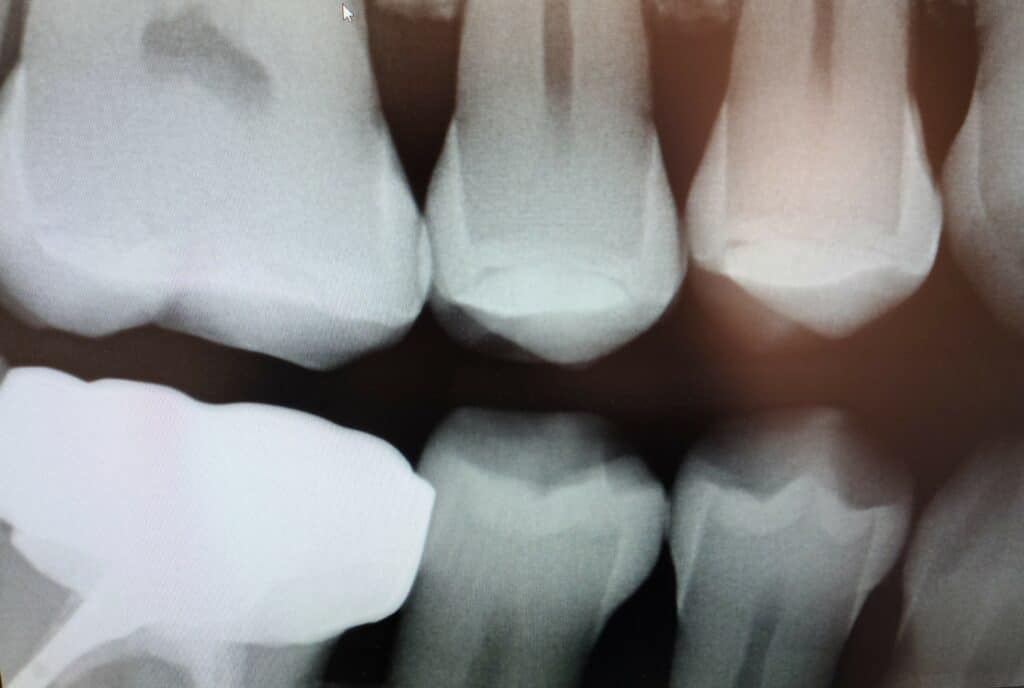
Dental X-rays
There are so many people that misunderstand x-rays. They know it’s a type of radiation and that they can be deadly. That was the extent of my knowledge before I went to dental hygiene school.
But what I didn’t know is how well our modern technology has been able to harness the power of x-rays to become beneficial to someone’s health. How so?
Well, the majority of dental offices now use digital sensors as opposed to traditional film. The sensors have been fine-tuned to need the lowest amount of radiation to produce a quality dental x-ray that can be used to see the health of a tooth.
Dental x-rays are one of the best tools to see the health of the underlying bone that supports the teeth, not to mention the integrity of the enamel and dentin layers of your teeth. If there is a cavity that is beginning to grow in the tooth, a dental x-ray will allow the dental team to spot it and either arrest it or treat it, thus helping you keep the tooth in working order longer.
So, how does a dental hygienist develop the skill of taking dental x-rays?
I remember having to squeeze a lever on a dummy head that was strapped to the dental chair headrest in order to have its mouth open. It was certainly challenging! The sensor wasn’t always easy to place in the mouth as was needed. Not to mention it sometimes fell out! Ughh! But I was happy to find out that it was easier to take x-rays on a real person than a dummy. 🙂
Dental x-rays help:
- Determine if you have dental caries (cavities)
- Determine how deep and how fast cavities are progressing.
- Determine the health of the bone between and around each tooth.
- Determine the health of a root canal procedure
- Determine the amount and location of tartar underneath the gums.
- Determine if a tooth is coming out (erupting) correctly.
So what are dental hygienists actually looking for when looking at a fresh x-ray?
The first thing I look for is bone levels around the tooth. I am looking to see if there are any areas where there is severe bone loss.
You see, your teeth are encased all around with bone. If you start to lose bone then you’re losing the very support system that keeps your teeth ensconced in your jaw bone. If you lose enough bone the tooth can fall out.
Another disease condition dental hygienists look out for when looking at x-rays are dental caries (cavities / tooth decay). Although in many states we are not allowed to diagnose cavities officially, we can still see that they’re there and we can alert the dentist when they come in for their routine dental exam.
Although I won’t go into detail about what a cavity looks like on an x-ray, the basic principle behind it is that there is a darkness in the tooth that shouldn’t be there.
Places to look out for cavities are at the contact areas where teeth are touching each other, underneath fillings or crowns and behind the last molar teeth on each side.
A well-taken x-ray can also reveal how well a root canal is doing but it must show the very tip of the root. Sometimes root canal treatments can fail and an infection can manifest itself at the very tip of the root. The patient will usually not feel pain because the tooth is no longer alive. Alternatively, there may be pain in the general area because the infection by-products are trying to find a drainage hole. In either case it is not healthy to have an active infection in the body so it is important to treat it ASAP.
Should you be concerned about the level of radiation received at a dental visit?
For the majority of patients getting x-rays twice a year poses more benefits than risks. It is true that there is no safe amount of x-ray radiation and it is cumulative. But one routine session of digital x-rays exposure is the equivalent to 0.004 milli Sieverts. By comparison, a person gets about 3.0 milli Sieverts from background radiation (source epa.gov)
When radiation is low and absorbed over a long period of time, the body can repair any damage it takes. Radiation is particularly dangerous and detrimental when it is absorbed in high amounts in a short period of time.
The choice is ultimately yours but please weigh all the pros and cons of taking x-rays for the sake of your dental health.
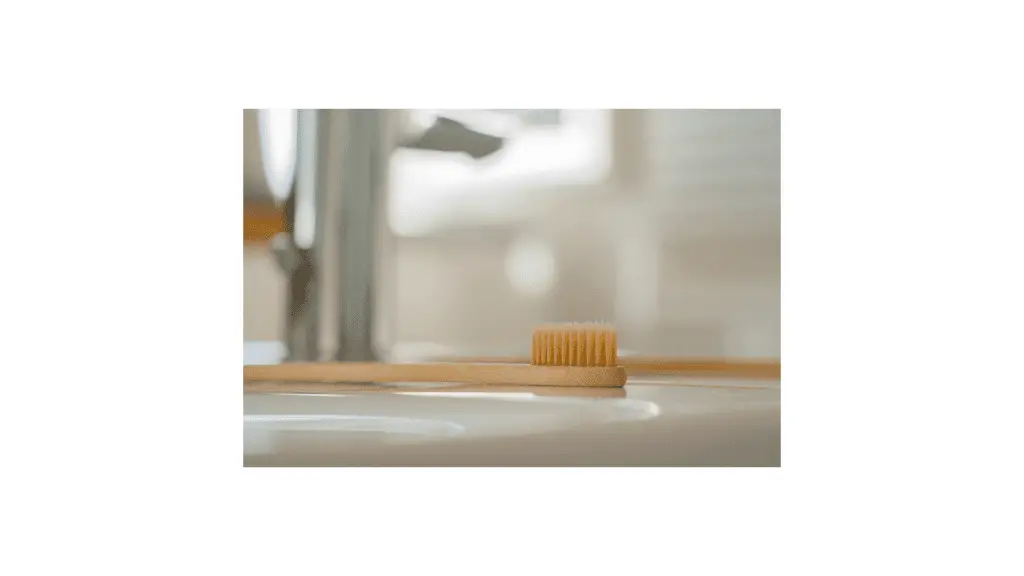
Oral Hygiene Evaluation and Instruction
Oral hygiene evaluation and instruction are the cornerstone of dental hygiene. This is the skill that will have the greatest impact on a patient’s health. Why? Because our patients are co-clinicians with us. Let me explain.
Even if we were to clean their teeth and remove all the plaque and tartar from their gums, if they don’t take care of their teeth at home then there would be no significant improvement in their overall oral health.
If they were to get all their cavities fixed and repaired and all their root canals done, but they don’t change what they eat or when they eat it then you could almost say it was all in vain. Their oral health will return to a state of dysfunction and pain.
But when the patient is taught how to properly care for their teeth and the proper foods they should eat AND the patient implements that knowledge, then nothing can stop the patient from having the best oral health possible.
This is our biggest hope for each and every patient.
So what are some of the top oral hygiene instructions we give to our patients?
Toothbrushing: We highly recommend some kind of electric toothbrush for the simple fact that an electric toothbrush will produce more brush strokes than a manual toothbrush will. More brush strokes will equate to more bacteria taken off the teeth.
Flossing: We also recommend to clean between the contacts of the teeth (the “tight” spot between teeth). That is the #1 place cavities form in adults. String floss (whether loose or floss picks) is the easiest most accessible dental tool available for this task.
Remineralization Creme/ Fluoride: This is an often overlooked and underestimated tool to prevent dental cavities or restore tooth structure. By bathing the teeth in calcium, phosphate and/or fluoride the teeth have an opportunity to pick up the minerals they need and repair weak areas. This technique has helped many to maintain whole/intact teeth for their whole lives.
Part of a top tier cleaning is the use of disclosing solution. Disclosing solution is a substance that is spread around the patient’s mouth and dyes the bacteria plaque different colors, effectively making the bacteria visible to the eye.
Once the bacteria is visible we can then effectively remove the bacteria with an air polisher, a prophy cup and prophy paste, hand scalers and/or ultrasonic scalers. The very best cleaning would include re-disclosing after the cleaning procedure to make sure there is no more biofilm bacteria present.
Unfortunately, many hygienists will not disclose because there is little time in a one hour appointment to add this procedure..
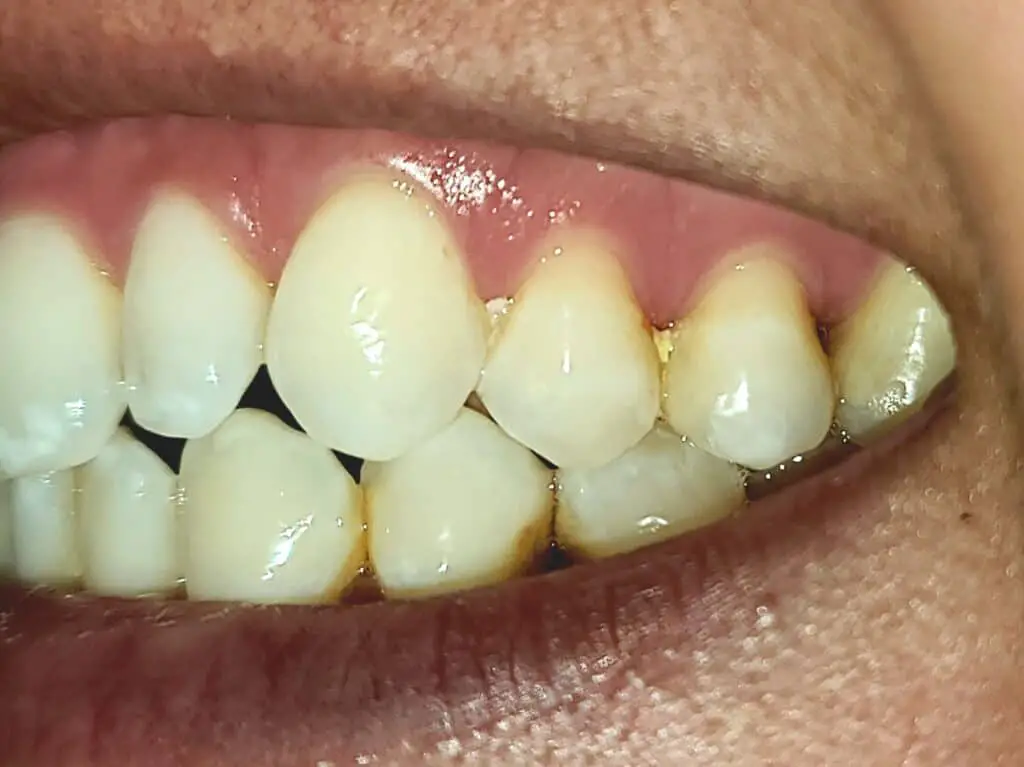
Gum Disease Evaluation (Gum Probing)
Probing is a procedure where the hygienist takes a 15mm blunt metal or plastic probe and inserts it between the gum and the tooth. The metal probe will sink in the space and the different markings on the probe will denote how deep the space is.
If the marking is between 1-3 mm in depth, the area is within healthy limits. If the marking is around 4mm in depth it denotes a state of disease that can be reversed. But if the marking is 5mm and greater this usually involves the periodontium (supporting tooth structure) which means irreversible damage to the underlying bone has already occurred / is occurring.
Some patients find this gum probing uncomfortable as if the hygienist is poking their gums with a sharp tool. If this is the feeling the patient is experiencing then their gums may be inflamed and they may be experiencing gingivitis (inflammation of the gums).
In any case, it is important to have a full mouth probing at least once a year. For those that have a history of periodontal disease the measurements should occur every 3 or 4 months or with every cleaning.
Another measurement to keep in a patient’s record is to measure the amount of recession each tooth has experienced. Over the years the dental record can reveal a change in gum levels and reveal if those levels have been constant or if they have decreased.
Unfortunately, like the disclosing solution application, the dental probing can be a procedure that is sacrificed for the sake of time.
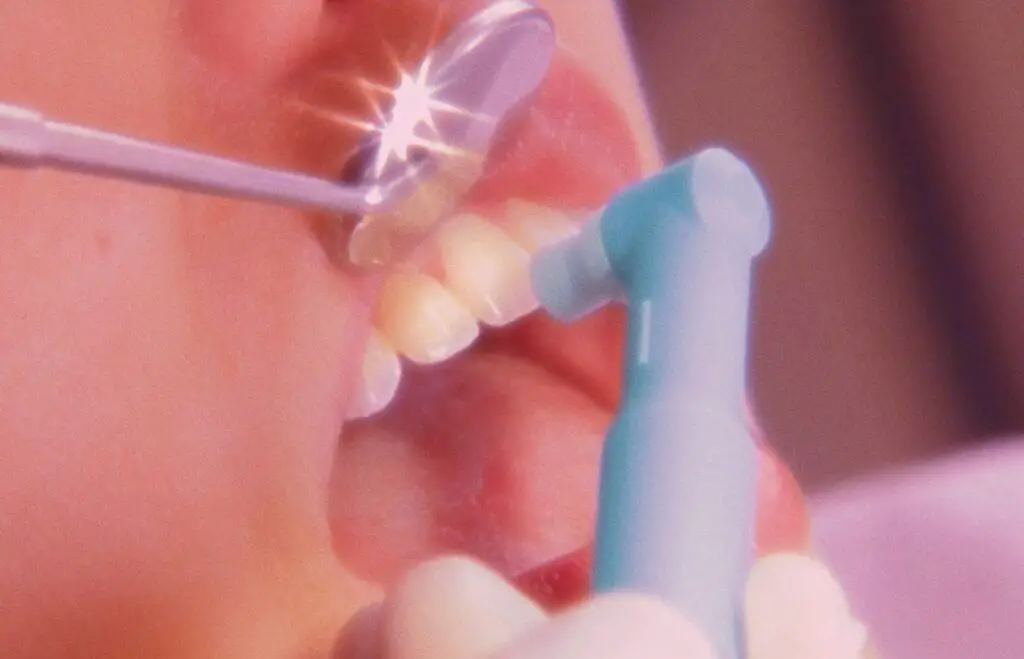
Tartar and Plaque Removal
And now, for the bread and butter of a dental hygienist: the tartar removal. Although, to be more specific, hard tartar removal is often accompanied by soft biofilm plaque removal. These two go hand in hand.
Tartar is the hard calcified saliva deposits that include the petrification of biofilm bacteria. This tartar often accumulates behind the lower front teeth on the tongue-side and on the cheek-side of the upper back molars. Those two areas correspond to where the saliva ducts open into the mouth.
The main tool hygienists use to remove tartar are sharp hand tools called scalers and curettes and powered scalers called ultrasonic scalers.
Scalers and curettes are used to scrape the hard tartar off the teeth. Sometimes hygienists have to remove the tartar layer by layer. Other times the structure of the tartar allows the hygienist to place the tool strategically under the tartar and “pop” it off the tooth (this is very satisfying).
Small short strokes are the best to remove the tartar. Scalers are pointy and are best suited to remove tartar above the gumline while curettes are best suited for tartar removal below the gumline as for those patients that have deep pockets.
But our favorite tool is the ultrasonic scaler! Also known as a Cavitron or Piezo (because of the most common brands), the ultrasonic scaler uses a powered metal tip that vibrates ultrasonically, several thousand times per second. Because this vibration produces heat they are usually designed for a stream of water to be aimed at the tip. Not only does the water keep the tip cool and comfortable for the patient but it also serves to flush out bacteria, bacteria toxins and other debris from the gums and teeth.
The other common tool for dental hygienists is the prophy cup and paste. This is a small cup that spins at the press of a foot pedal. Paired with a prophy paste that has different grits and flavors, the prophy cup polishes teeth, removes sticky biofilm plaque and leaves a clean, smooth feeling on patient’s teeth.
Another tool worth mentioning is the air polisher. This tool uses pressurized air, water and baking soda-based powder to thoroughly and quickly remove plaque and stain from teeth and gums. Some systems, like the AirFlow, even have a special tip that’s designed to clean underneath the gums, thus giving the patient a big advantage in controlling their periodontal disease.
Although hygienists are renowned for their role in controlling tartar and plaque for their patients, there’s more to them than just scraping teeth as you’ll see below.

Intraoral and Extraoral Oral Cancer Screenings
Oral cancers are some of the most aggressive and deadly cancers among the population. They can also be disfiguring if caught too late. Dental hygienists that perform proper oral cancer screenings can be life-savers.
In an intraoral cancer screening we take a close look at the sides of the base of the tongue, the back of the throat, the cheeks, gums and the area under the tongue. We also palpate, or touch/press, on those areas to check for any suspicious lumps or bumps.
Some dental offices will have a special light that will highlight any areas of the inside of the mouth a different color. This means that the cells in that area show abnormalities and may be suspect for an oral cancer.
As part of the extraoral oral cancer screening, the hygienist will “massage” the neck on both sides, under the chin, behind the ears and the nape of the neck. If there are any lumps or bumps this “massage”, or palpation, will reveal them.
Patients that are at high risk for oral cancer are smokers (either vape or tobacco), heavy drinkers, and those that use drugs on a regular basis. This question usually leads to another role hygienists are trained to address.
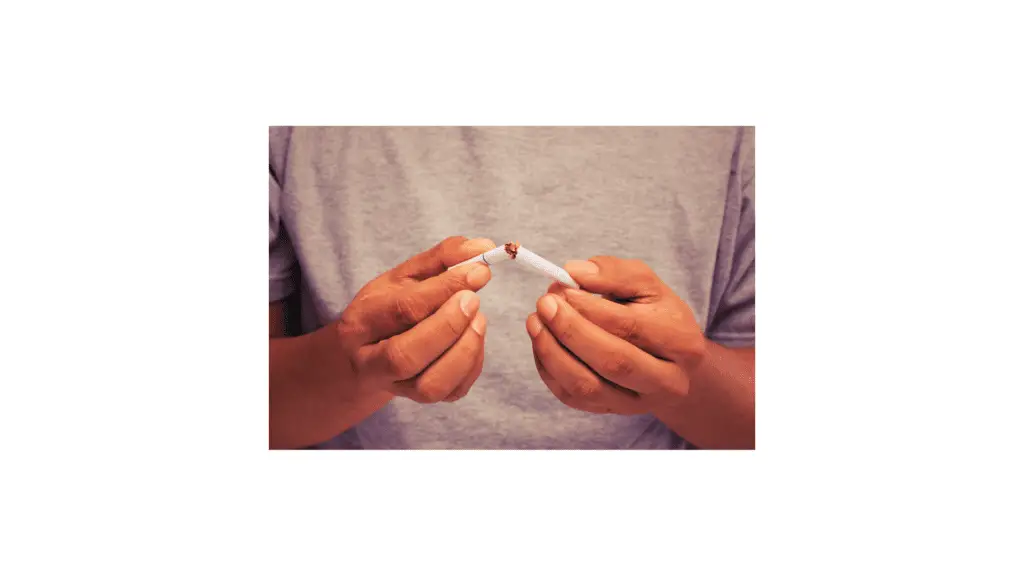
Smoking Cessation Intervention
Smoking Kills.
Who would be better qualified to curb this epidemic than the dental team? Since smoking is taken in through the mouth and hygienists are in the mouth day in and out all dental hygiene programs have a course in smoking cessation.
Through a series of questions dental hygienists can find out the patient’s motivation level to quit smoking. They may be able to inspire the patient if they point to previous successful quits the patient had.
If the patient is interested in quitting hygienists can then guide them to different resources to aid them in quitting. If they are not interested then they can be reassured of support from the dental team if they ever decide to quit.
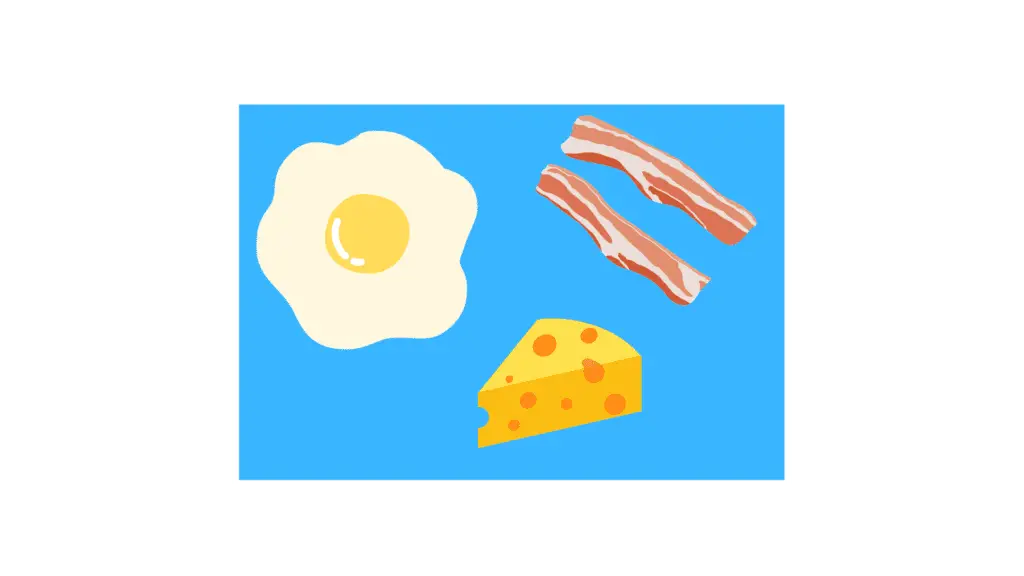
Nutritional Counseling
Although hygienists are not dieticians we are trained to explain the effect certain foods have on the teeth. It so happens that the foods that are good for teeth are also good for the body.
The main culprits in dental cavities are sugar and refined carbohydrates. There are specific bacteria in the mouth that go crazy with foods rich in these ingredients and will cause high damage to the teeth.
Therefore, the perceiving hygienist will reserve some of the appointment time to question the patient on their eating habits. This conversation can reveal some weak points and set the stage for the hygienist to offer suggestions to stop and reverse the damage.
Some suggestions include choosing snacks and foods that are low in carbs like meats, eggs, jerky, and hard cheeses. The hygienist may also choose to review brushing and flossing habits to make sure the patient can remove the sugars once they have consumed them.
Where You Can Find Hygienists
Clinical dental hygienists may work in a variety of health care settings such as:
- Private dental offices
- Schools
- Public health clinics
- Hospitals
- Managed care organizations
- Correctional institutions
- Nursing homes
- Corporate environments
- Administrative capacity in any of the above locations.
“NO WORK IS INSIGNIFICANT. ALL LABOR THAT UPLIFTS HUMANITY HAS DIGNITY AND IMPORTANCE AND SHOULD BE UNDERTAKEN WITH PAINSTAKING EXCELLENCE.”
-MARTIN LUTHER KING JR. (AMERICAN ACTIVIST)
Making a difference
The dental hygiene profession is a rewarding and much needed profession in our society. There is so much that goes into refining the skills needed to complete all of the above tasks in a timely manner and with high quality that it is no wonder it takes two years to complete the proper training.

